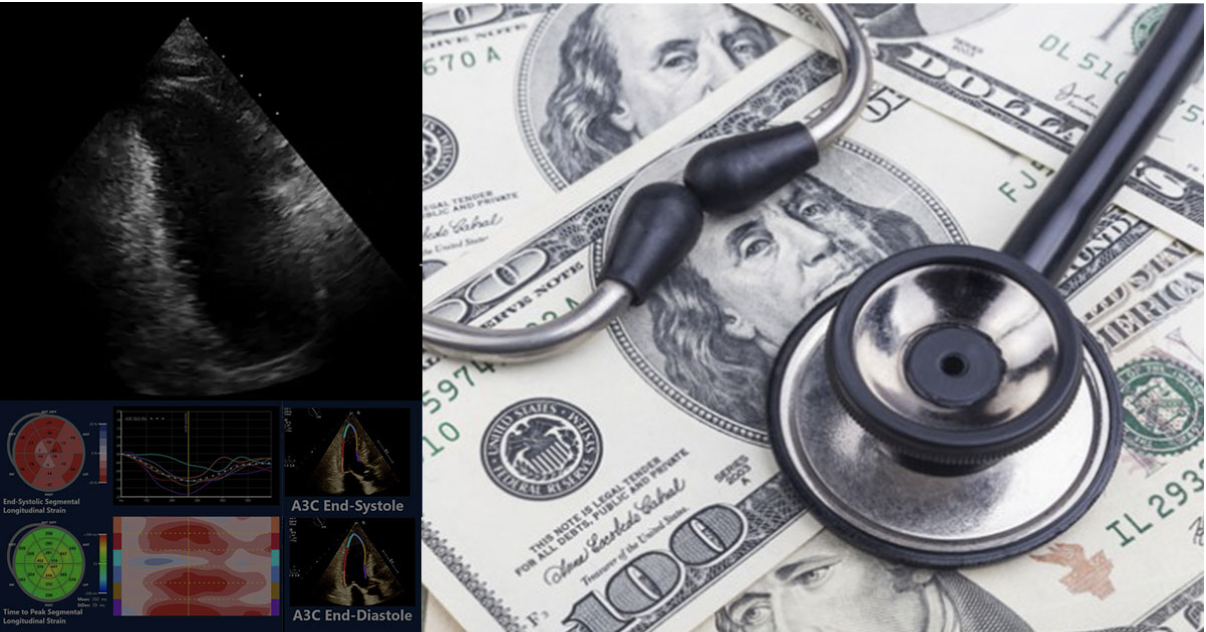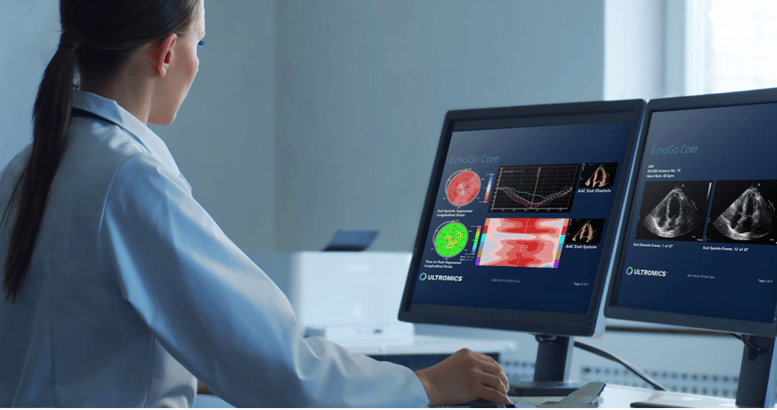
New strain code is first echo technology to get medicare reimbursement
- | By Ultromics
- Strain
As of January 1 2020, cardiologists in the United States can now report and bill for myocardial strain imaging using the new Category 1 CPT code +93356. The policy was announced by Medicare / Medicaid Services (CMS) in November 2019, and is an important milestone as it’s the first echocardiography service to achieve CPT Category 1 status in years[1]
The new CPT code can be reported in conjunction with various transthoracic echocardiography procedures; 93303, 93304, 93306 and 93308, in addition to stress echocardiography services; 93350 and 93351. The intent is for this code to be reported once per imaging session.
US recommendations for measuring Strain
Most guideline and consensus documents recommend routine strain echocardiography assessment alongside conventional left ventricular ejection fraction (LVEF) in areas such as non-invasive Imaging in coronary syndromes [2], management and assessment of heart failure [3], surgical planning in valvular heart disease [4], assessment for cardiotoxicity [5], and patients with hypertrophic cardiomyopathy[6].
Recognized for its value in earlier disease detection and its ability to provide prognostic information, Global longitudinal strain (GLS) offers a reliable and reproducible measure of global LV function and has incremental prognostic value over ejection fraction (EF). This heightened sensitivity in detecting left ventricular dysfunction when assessing for myocardial diseases can improve patient outcomes. [7]
Related Read: The Value of Strain in Echocardiography: What the Guidelines Say

Indices of myocardial deformation, such as global longitudinal strain, may identify subclinical LV systolic dysfunction, which has been associated with greater risk of developing HF or recurrent HF hospitalizations.
-2022 AHA/ACC/HFSA Guideline for the Management of Heart Failure
Precision Strain analysis
Over the intervening 20 years, enough evidence has accumulated for strain to have entered guidelines for clinical decision making. However, this has created a problem. How do echocardiographers and clinicians start to follow these guidelines and routinely measure strain?
Achieving accurate and reproducible strain analysis is possible today with AI technology.
EchoGo Core provides fully automated left ventricular analysis using AI. Built on ten years of known outcomes, the platform provides unmatched accuracy and zero variability, independent of human interpretation. It is predictive of cardiac outcomes and outperforms both traditional semi-automated or manual analysis. [8]
References
- https://www.asecho.org/myocardial-strain-imaging-add-on-cpt-code-and-live-webinar/#:~:text=ASE%20is%20proud%20to%20see,with%20various%20transthoracic%20echocardiography%20procedures.
- https://academic.oup.com/ehjcimaging/article/23/2/e6/6423983
- https://www.ahajournals.org/doi/10.1161/CIR.0000000000001063
- https://www.ahajournals.org/doi/10.1161/CIR.0000000000000923
- https://pubmed.ncbi.nlm.nih.gov/34396303/
- https://www.ahajournals.org/doi/10.1161/CIR.0000000000000937
- https://ccforum.biomedcentral.com/articles/10.1186/s13054-018-2113-y
- https://www.ultromics.com/proof/wase-ii-ventricular-changes-in-patients-with-acute-covid-19-infection-follow-up-of-the-world-alliance-societies-of-echocardiography-wase-covid-study
Guideline update
Myocardial strain echocardiography has emerged as a valuable predictor of heart failure and other adverse cardiac outcomes.



